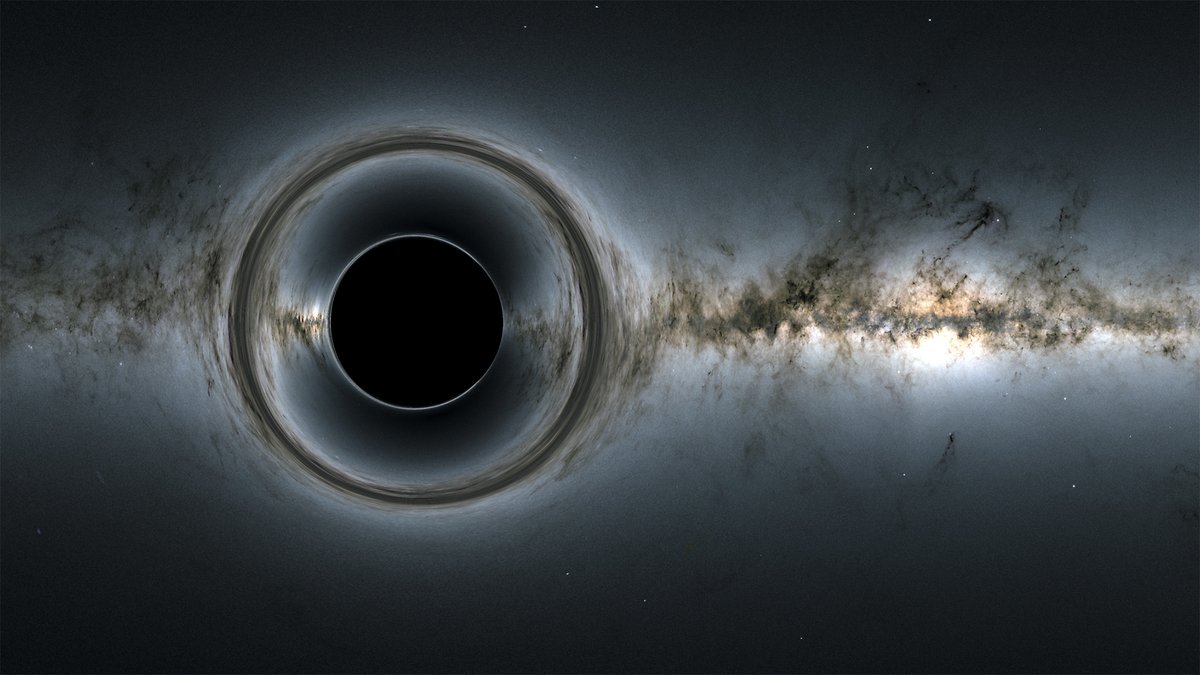Microlensing strikes again. Astronomers have been using the technique to detect everything from rogue planets to the most distant star ever seen. Now, astronomers have officially found another elusive object that has long been theorized and that we first reported on back in 2009 but has never directly detected – a rogue black hole.
That detection comes at the end of a 6-year observational campaign, with dozens of authors collaborating on a paper recently published in arXiv (meaning it has not yet been peer-reviewed). Those six years of painstakingly gathered data all started back in 2011, when a star about 20,000 light-years away brightened suddenly. Scientists were looking for just such an event and had found several before but needed more data to be sure of what they were actually seeing.
Microlensing leaves two tell-tale signs. The object in the background of a microlensing event would grow significantly bright, as was seen with this star in 2011. In addition, and if the positioning were lucky enough, telescopes would see the star shift ever so slightly as the massive lensing object passed in front of it.
Past observations have shown plenty of brightening events that microlenses might have caused, but astronomers have never before seen the positional shift that would confirm that theory. Kailash Sahu and his colleagues turned Hubble, which is still one of the most functional observation platforms in humanity’s arsenal, toward the star a few weeks after its original brightening. They then checked back in with it periodically over the course of the next six years. In that time frame, they also collected positional data, hoping to use a technique called astrometry to detect slight movements that would indicate the star was subject to a microlensing object between itself and Hubble.
A combination of warping and amplification of the star’s light is exactly what Hubble saw. But even that wasn’t conclusive enough to prove that the heavy object in front of the star was a black hole – just that it was heavy enough to cause a microlensing effect. To rule out other potential sources of the microlens, Sahu and his colleagues checked the light level of the lens itself. They did not find any, which would have been the case if another object, such as a brown dwarf, was the cause of the lens. Also, the duration of the lensing effect must last long enough to suggest a particularly deep gravity well. The original event in 2011 lasted 300 days, enough to point to a black hole that weighs approximately 7.1 times that of the sun.
With that weight estimate, scientists were also able to estimate how fast the black hole was moving and came up with around 45 kilometers per second – much faster than the stars surrounding it in that area of the Milky Way. Such a speed differential also points to a potential source of the black hole itself – an explosion from a supermassive star probably both created the black hole and kicked it on its way. Sahu estimates the event happened around 100 million years ago, but it is hard to tell as there is no clear, traceable path to where the black hole came from.
Even without that clear, traceable path, scientists have now definitively found something they have long sought, and they won’t be alone in doing so. Several all-sky surveys are popping up soon that will help scientists consistently scan the skies for events like that in June 2011, and they will most likely find plenty more. That isn’t to say that any of these hard-to-see masses of gravity will prove a threat to Earth, but the more we leverage new techniques like microlensing, the more likely we are to find any that eventually might be.
Learn More:
arXiv (Sahu et al.) – An Isolated Stellar-Mass Black Hole Detected Through Astrometric Microlensing
Scientific American – Astronomers Find First Ever Rogue Black Hole Adrift in the Milky Way
Syfy – ASTRONOMERS FIND THE FIRST ROGUE BLACK HOLE WANDERING THE MILKY WAY!
Futurism – Astronomers Just Found A Rogue Black Hole Careening Through Its Galaxy
Lead Image:
Simulation of the lensing effect around a supermassive black hole.
Credit – NASA Goddard Space Flight Center, ESA / GAIA / DPAC

